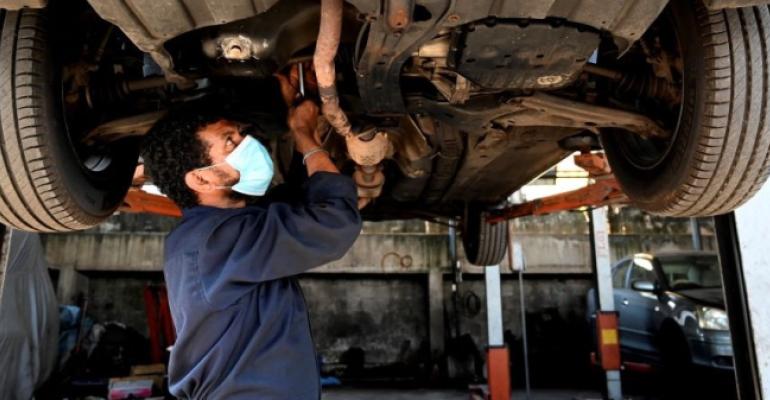LAS VEGAS – Want to boost your gross Fixed Ops profit by up to $2 million?
Focus on menus, multi-point inspections and technician productivity, Ken Barnes, sales director-DealerPRO Training, tells attendees at the recent Digital Dealer conference here.
“A lot of (general managers) came up on the sales side of the business, so they don’t know service that well,” Barnes tells Wards. “Some service managers don’t like change and may convince the general managers they can’t (change processes) for whatever reason. And some owners don’t want to be involved in service. As long as customers don’t complain and service functions day-to-day, they don’t get involved.”
Yet those who become involved by adding service menus, stressing multi-point inspections and monitoring technician productivity increase gross profits significantly.
Dealers can filter such activities into service by employing processes that mirror those in F&I and sales. Consider these three main processes that jumpstart fixed ops profits:
Service menus. Barnes found that 80% of service departments don’t have menus and many service advisors don’t know how to present them. One Pennsylvania dealer who committed to service menus saw year-to-date gross profits rise 57%. He recommends using F&I menus as templates for service. Some examples:
- F&I measures finance penetration; service measures number of repair orders per day;
- F&I measures electronic stability control (ESC) penetration; service measures dollar amount of sales per day
- F&I measures Tire and Wheel coverage; service measures menu sales per day.
Multi-point inspections. Service advisors sometimes hesitate to provide multi-point inspections for fear of looking like they’re upselling. Barnes likens multi-point inspections to visits to doctors’ offices. When a patient goes to a doctor for an upset stomach, the physician will likely examine the patient for other issues. Patients may not want to have such issues addressed on the same day, but they are made aware of them.
Dealerships can use that example when illustrating the benefits of multi-point inspections. It shows technicians how such inspections fulfill an ethical responsibility to the customer while increasing productivity and profitability. One South Carolina Honda dealer saw year-to-date gross profits climb 59% after they committed to multi-point inspections.
Barnes also cautions against assuming how much a customer wants to spend on their vehicle. He tells the story of a car in very rough shape whose owner invested thousands for somewhat sentimental reasons, much to the surprise of the wary service advisor. Don’t make decisions for your customer.
Track technician productivity. Although 100% of dealerships track sales members’ performances, only 20% track service team performances, says Barnes. Those who take steps that include measuring hours produced per technician each day, instill urgency in goals and incentivizing pay have seen a year-to-date gross profit increase of 42%, says Barnes.
He recommends using appointment coordinators instead of service advisors. The coordinators sell services all day, can schedule 10-12 appointments per advisor and reduce the number of customer no-shows with appointment reminder calls and fewer unanswered incoming calls.
“These are just some of the ways to boost service” profits, he says, adding even small steps matter. “Even the worst menus can increase sales.”





